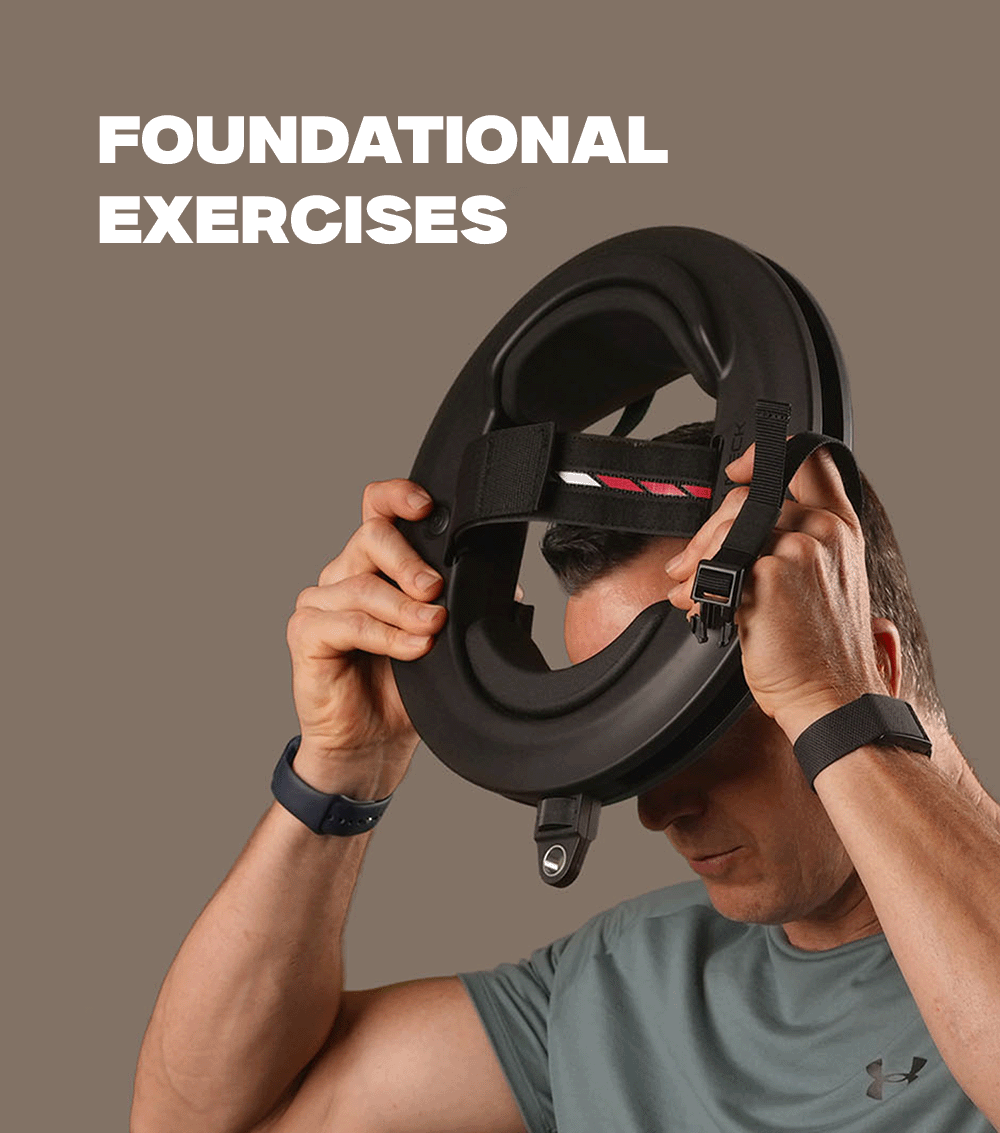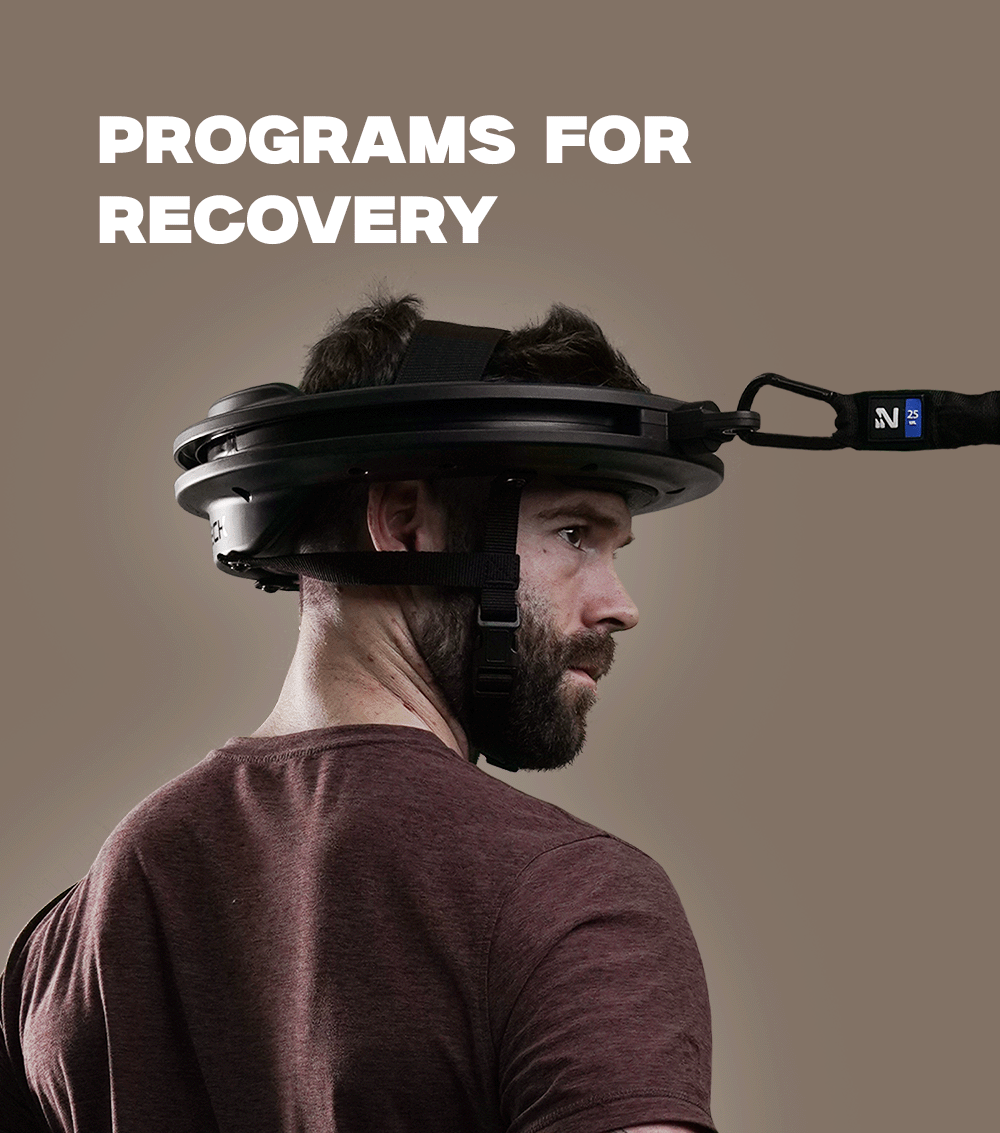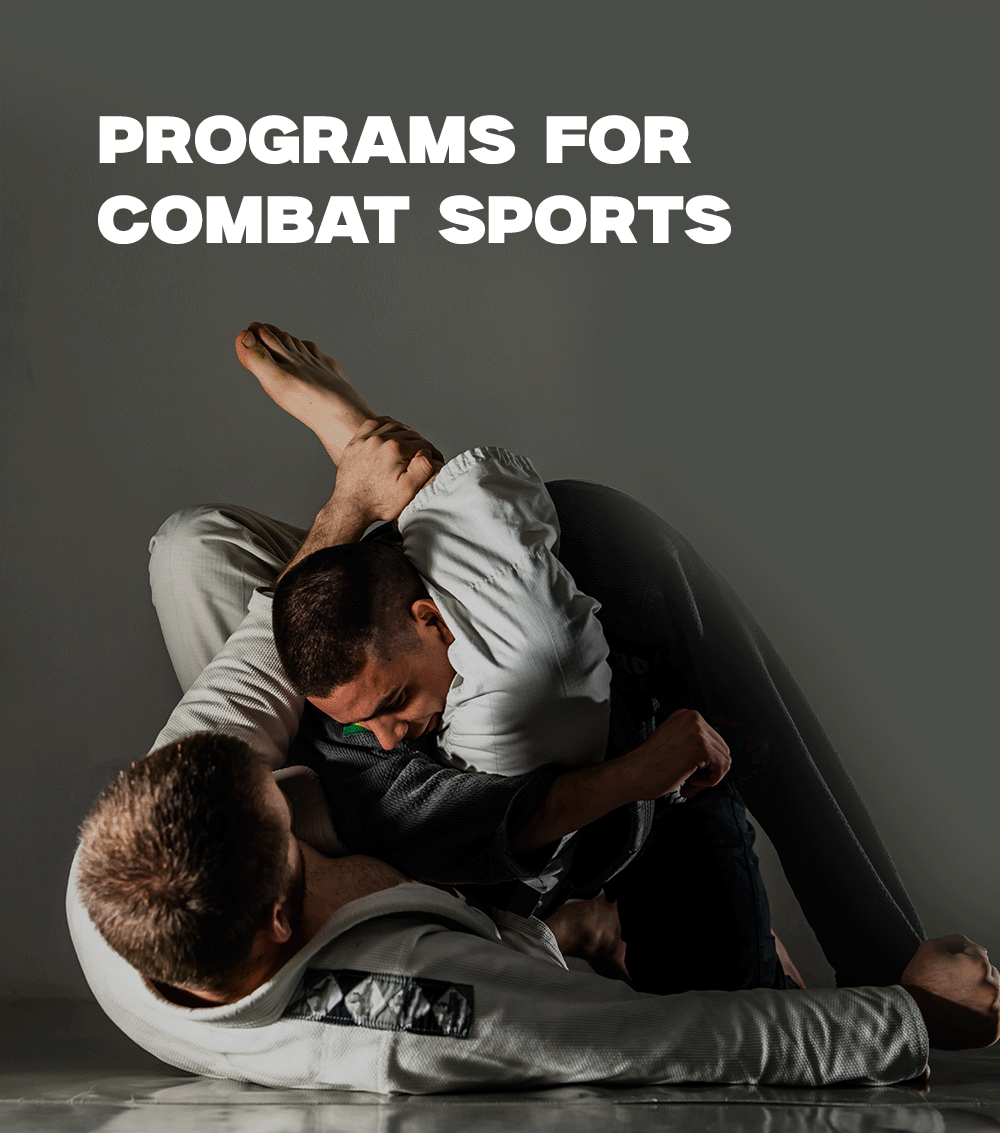Want to learn all about neck training? You've come to the right place. Our complete guide on how to train your neck will help you get started with confidence and see results as fast as possible.
Neck training is an often underutilized aspect of physical fitness. Make no mistake though - it is just as important, if not more important, as the rest of your training. Particularly in combat & contact sports, training the neck protects you while actively enhancing your athletic abilities - making the benefits of neck exercises two-pronged.
So why don’t more coaches and trainers implement these exercises into their training regimens? And how do you get started yourself?
You've got questions, we've got answers. In this article, we’re going to cover everything you need to know. We’ll discuss safety, benefits, and how to start training your neck - whether you have a gym membership or want to learn how to do neck workouts at home!
What Is Neck Training?
Neck training is exactly what it sounds like - implementing exercises to improve the strength, stability, and range of motion of your neck.
Many people think training their body is just about getting stronger - but that’s only part of it. You also need to be actively improving the mobility and range of motion you’re capable of, while also improving your ability to stabilize loads.
Unfortunately, many omit this aspect of training until it’s too late - and they suffer a neck injury. In most cases, injuries can be prevented - or at least, decreased in severity - if you have a stronger neck.
Is Neck Training Safe?
When you see someone actually training their neck, it can look a bit sketchy. Maybe you’ve questioned if it's actually safe in the first place.
There are a few risks of training the neck muscles - these include impingement, strained muscles, nerve compression, and more. The unfortunate reality is that the small population of athletes that do incorporate neck training doesn’t always do it with proper form, or better yet, under the guidance/care of a professional trainer.
When done correctly, using manageable loads and proper form - it is completely safe. Watching our videos on how to conduct certain exercises will help prevent you from injury while training.
And, keep in mind - if your goal is to increase neck strength, you'll need to train hard and frequently. As a result, neck pain after workouts isn't unordinary - this is known as DOMS (delayed onset muscle soreness). If it lasts more than a day or two, then there may be cause for concern.
Do Neck Exercises Really Work?
Before you spend the time learning how to train your neck, you're probably wondering...is it really worth it? Will neck training really pay off for you?
If you’ve seen someone with a neck harness on in your gym or training facility, your next question after wondering about safety is, does that really work? There is a reason the top trainers in the world swear by it - yes, neck exercises do work!
Whether you’re a bodybuilder, strength athlete, boxer, or hockey player - these can enhance your performance and improve your longevity in whatever it is you do. Let’s examine why.
Why Neck Training Is So Important for Everyone (Athletes & Working Stiffs Alike)
There are a few main benefits associated with neck training, including better mobility & range of motion, decreased risk of injury, reduced neck & back pain, and better core strength and biomechanics.
Most concussions and whiplash injuries are exacerbated by weak, immobile necks. This is important for just about any contact sport, but most importantly those where your head gets whipped around.
This makes it an essential part of your training if you’re a boxer, martial artist, football player, etc. As a result, we have a complete guide on neck exercises for boxing and wrestler neck exercises too.
But training the neck muscles is a good idea for anyone - athlete or not. Let’s look at some of the science behind it.
The Relationship Between A Strong Neck & Concussions
For every athlete - but particularly those competing in contact or combat sports - concussions are a constant concern. Trainers and coaches put a lot of focus on agility and awareness to help prevent their athletes from ending up in situations that could result in a concussion. But is there more we can do in the battle against head injuries? Yes, as a matter of fact - that's where neck training comes in.
Let’s take a moment to iterate that concussions aren’t always the result of head trauma - sometimes, the snapping back of a head or violent rotation is all it takes to rattle your brain, resulting in the C word.
This is the exact reason so many athletic trainers and coaches preach neck training - a stronger neck is more capable of withstanding force and remaining rigid. This means that a stronger neck is better suited for preventing concussions. By helping absorb blows with a thicker, sturdier neck, you’ll be less likely to miss time from your sport with a head injury.
Training the Neck Decreases Other Neck Injuries, Too!
By training your neck, you aren’t just minimizing the likelihood of developing a concussion - you also are minimizing the likelihood of developing spinal injuries in the cervical and thoracic spine.
Aside from our feet and hips, the neck is one of the most complicated joints and muscular systems. There is a lot that can go wrong in this small little region of our bodies.
Thus, it doesn’t take much to injure your neck - especially when it's weak! A strong neck is much harder to injure - plain and simple. There are simple neck spasm exercises you can try and even exercises for pinched nerves in the neck.
Moreover, you can rely on the exercises we'll share later on to help manage neck pain from golf or cycling neck pain. Finally, you can rely on neck posture exercises to get rid of tech neck or other posture-related problems that can contribute to more serious injuries down the line.
How Neck Training Enhances Athletic Ability
Aside from helping keep athletes in the game through injury prevention, neck training enhances athletic ability too. This means you aren’t just protecting yourself - you’ll actually become better at what you do! You might be skeptical, but consider the importance of vision in sports. You need a clear view of your teammates, the opponent, the goal - you name it.
You’ve likely heard the term “keep your head on a swivel”. This means that you need to be constantly looking around you and scanning for threats and opportunities. And what muscles are responsible for helping us turn our head, look up, look down, etc?
That’s right - the neck. By training your neck, you can increase the speed and efficiency at which you track objects in front of, to the side of, and behind you. With all this said, you can see why more and more athletes and everyday people alike are learning how to train neck. So, without any further ado, let's discuss how to train your neck...
How To Train Neck: Step-by-Step Guide to Getting Started With Neck Training
Now that you recognize all the benefits of neck training, you're probably ready to learn how to train your neck. And, fortunately for you, that's exactly what we'll discuss next.
In general, you want to make your training very smooth and controlled - this is going to go a long way in preventing injury. Your reps should be in the 15-20 range. We will go more in depth into the actual methodology and tactics behind neck training in a bit.
But in terms of actually training your neck, you’ll need a bit of equipment. There are two ways you can get started - with a neck harness or a more sophisticated neck machine.
First, Choose Your Equipment: Neck Harnesses vs the Iron Neck
The neck harnesses we mentioned earlier are a great option if you have weights on hand already and you’re on a budget. They wrap around and fasten to your head, and include a chain and carabiner. These are used to attach to weights - ideally plates, but dumbbells work too.
However, if you don’t have plates you can also use looped resistance bands that attach to your door with a door anchor. With these and a neck harness, you have a complete neck training system on a budget! From there, you can execute a number of different neck exercises to stabilize, mobilize, & strengthen the intricate muscles of the neck.
However, if you’re a bit more serious about your training - and you have the budget - there is no better way to train your neck than with the Iron Neck. It’s the #1 neck strengthening device on the market, unlocking more exercises than a standard harness, and even most commercial gym machines. With this piece of equipment, you gain access to the best neck exercises for mass such as:
- Cervical glides
- Thoracic rotations
- Figure eights
- Protraction/Retraction
- Reverse Nordic
With the Iron Neck, you can train your neck from anywhere - your home, the office, or anywhere you can find a door. Now - let’s discuss what your training should actually consist of!
The Primary Movements Of The Neck That Need To Be Trained
Before we start explaining specific exercises we recommend, let’s talk about general movement patterns first. Every muscle has a purpose. Some muscles have multiple purposes. But the neck has four main motions we rely on it for:
- Flexion
- Extension
- Lateral Flexion
- Rotation
Flexion is just tucking the chin into the chest. This is an essential movement when we look down and is a primary movement for those playing sports where the ball/object is near their feet - like soccer, hockey, or lacrosse.
Neck extension is just the opposite - lifting the head up and back. Neck extension is important in sports where you’re looking to the sky - such as baseball, football, and even basketball.
Lateral flexion and rotation are similar in that both these movement patterns deal with left-to-right movement, but they differ a bit in specifics.
Rotation is important in every single sport - it’s moving your head left to right, looking over your shoulder for example. Having great rotation is necessary for improving vision since we don’t have eyes in the back of our heads, unfortunately. This requires strong muscles on the side of the neck.
Lateral flexion, on the other hand, is moving the head left to right, touching your ear to your shoulder. It’s a combination of rotation and flexion.
Specific Exercises to Jumpstart Your Neck Training Regimen
Your training should pull exercises that focus on all four movement patterns for the neck. However, you should definitely try and get as sport-specific as possible - think about which of these four movement patterns are most important in your sport (or your athlete’s sport), and hammer those.
With either the Iron Neck or a traditional neck harness you are able to train all four movement patterns. You’ll want to carefully research the exercises you plan on implementing before you perform them. Video tutorials are best for this. Make sure you target all dozen muscles in the neck, as each is crucial in athleticism and injury prevention.
Our database of exercises features entire workouts and individual exercises you can choose from to make up your training. It’s a great resource no matter how familiar you are with neck exercises!
You can choose to go over basic movements or look at workouts/exercises specific to mobility or strength. We even link to videos of each one to help you perfect your form, and start training your neck like an expert.
Or, explore our blog posts on neck toning exercises or neck fat exercises.
Loading, Tempo, and Intervals
Technique and time under tension matter a lot more than weight, so stick to lighter loads and higher reps.
Because the muscles in your neck are mainly slow-twitch, they aren’t super strong. But, they fatigue quickly. When first starting, an athlete will get plenty of stimulus from just a few sets of 15 reps on one exercise. So, start slow with neck training.
In terms of tempo, this is another area where sport specificity matters. Most athletes benefit from a standard 2020 tempo, whereas those in grappling sports where more isometric work is necessary should opt for a slower 1018 tempo.
When it comes to rest periods, keep them short. Because there is such ample blood flow to the neck muscles, they recover quickly. Anything longer than 75 seconds between sets is too long.
How Long Will It Take to See Results?
We know you're eager to get started now that you know how to train your neck - but how long will it take for you to see results? Keep in mind, there is no way to learn how to gain an inch on your neck overnight - this is something you'll need to stick to and remain consistent with.
However, by following the advice above and focusing on diet and recovery, you'll be amazed at the neck strength and neck muscle size gains you make over the course of a few months - or a few years. Take frequent progress pictures so you can see how far you've come. And, be sure to follow progressive overload tactics to force your neck muscles to grow stronger and stronger.
Final Thoughts on How to Train Neck
There you have it - our complete guide on how to train your neck. We hope that you feel more confident in starting your own neck training journey - as you can see, it's much easier than you may have originally thought. And now that you know all the benefits of neck strength and a muscular neck in general, what are you waiting for?
Head over to Iron Neck and get all the gear you need to perform any neck exercise. If you want to learn more before getting started, you can learn how to get a thicker neck in our blog. It's time to improve your athletic performance, decrease your risk of neck injury or concussion, and simply enjoy a more mobile, pain-free neck!





